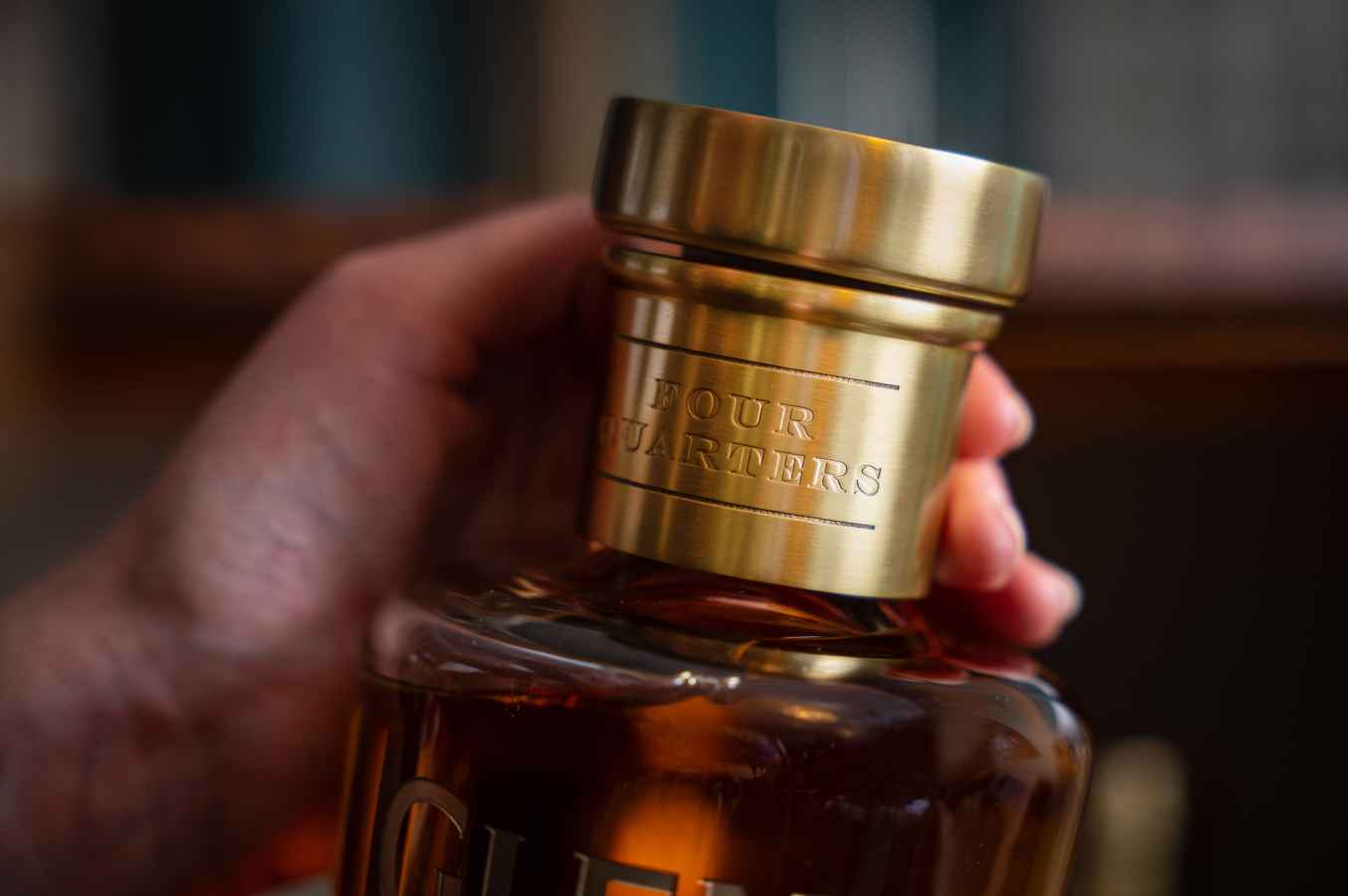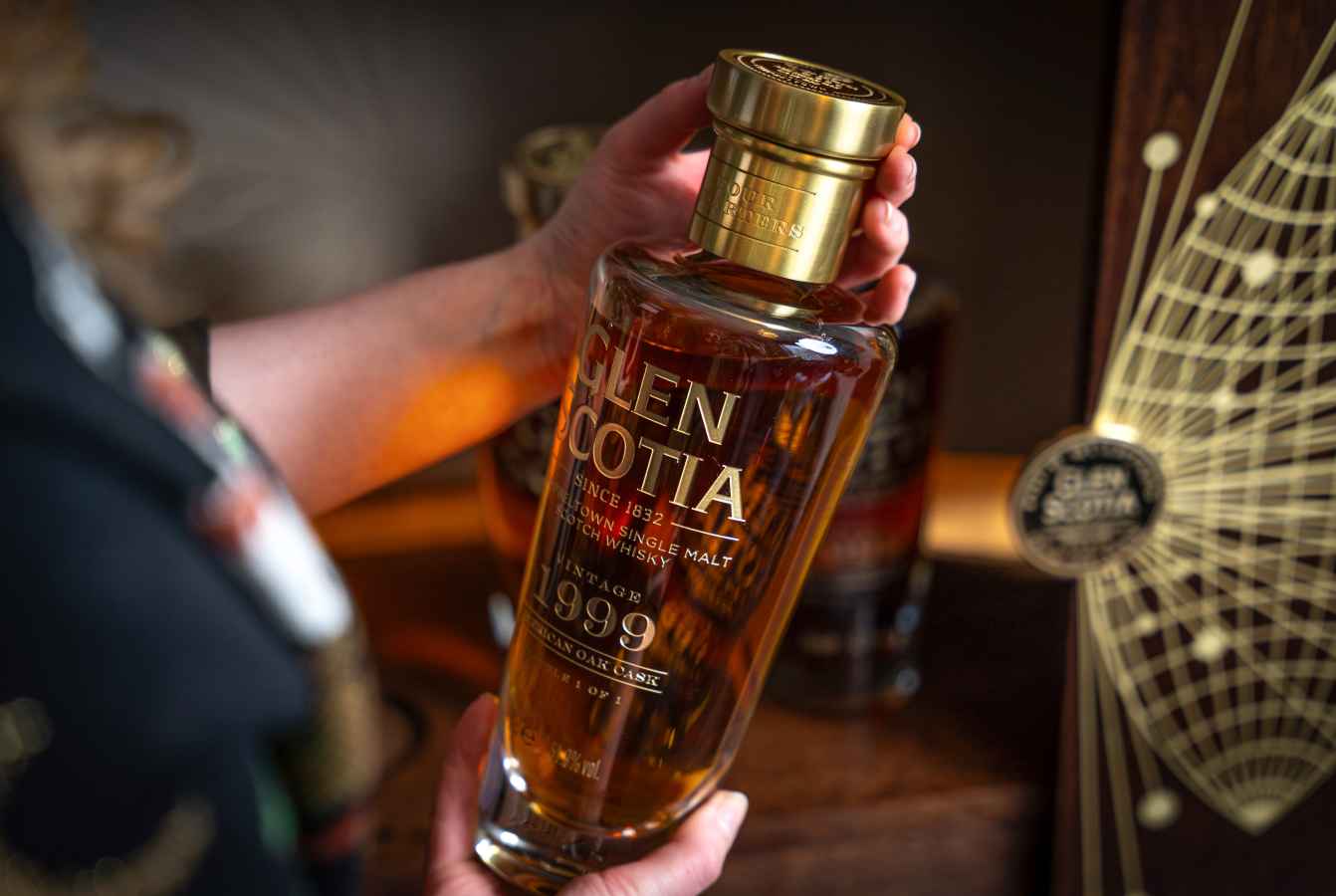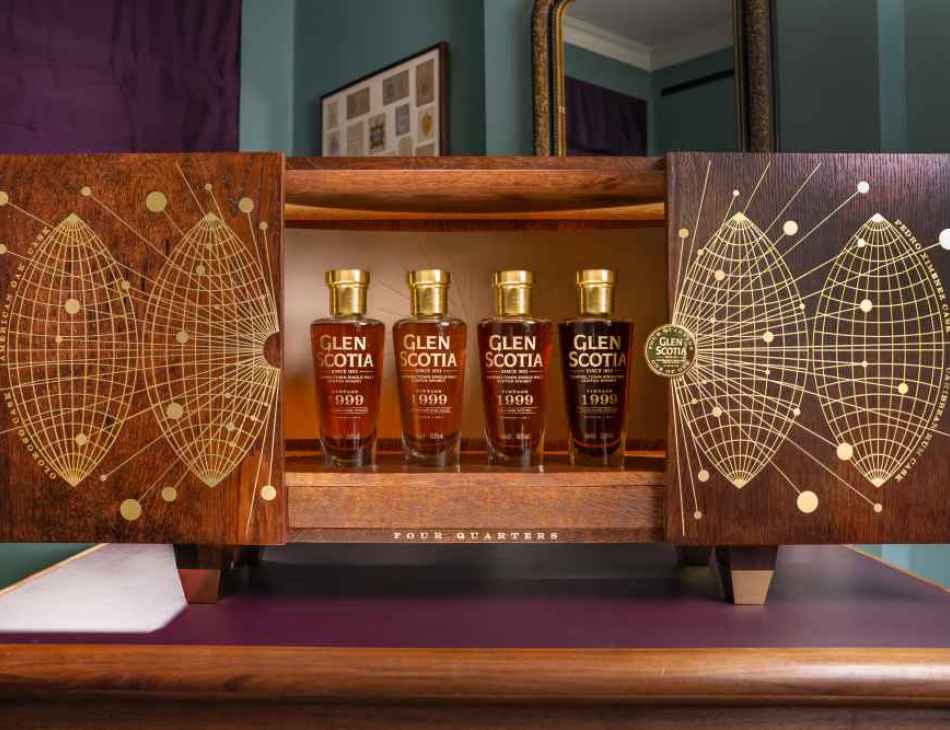Glen Scotia Four Quarters at Distillers One of One
The stunning presentation
I was in Edinburgh earlier this week to taste Glen Scotia’s Four Quarters set that is heading to the Distillers One of One charity auction. It is rare that a single tasting manages to cover history, technique, design and philanthropy with the same clarity. This did. Four single malts from the same month in 1999, each a quarter of a century old, and each showing a different facet of Campbeltown’s character through its choice of cask. The presentation, made in collaboration with renowned jeweller Hamilton and Inches, lifts the project from an exceptional selection of whiskies to a collector’s piece. I hope the eventual buyer opens these bottles and shares them with friends.
What makes Glen Scotia taste like Glen Scotia? I sat next to Master Blender Michael Henry, who reminded me that Campbeltown’s remoteness shaped its distilling culture. Small stills with short necks were the norm in the nineteenth century, a legacy of the illicit period that persisted after legalisation. Short necks allow heavier compounds to travel into the spirit. The result is fuller texture, concentrated flavour and a distinctive weight on the palate.
Glen Scotia’s signature sits on three pillars. First, a thick and almost oily body. Second, a ripe fruit character that often suggests pineapple, mango and soft orchard fruit. Third, a saline note that speaks of the coast. Understand that trio and you can read the rest of the set with ease, because every cask finish in Four Quarters is a variation on that central theme.
We began with the 1999 American Oak Cask, bottled at 51.9% ABV. This refill American oak cask was drawn from spirit distilled on 29 November 1999. The point of starting here was to give a reference point to the other three bottles. It is Glen Scotia in its most natural form.
On the nose I found pineapple, vanilla, some bourbon biscuit aromas, and a light sea spray note. The palate showed honey, apple and grapefruit with stem ginger. The finish was extraordinarily long, lingering for what seemed like minutes. The whisky was textured, delicious and very enjoyable.
Campbeltown’s history explains the other three cask choices. In the Victorian era Glasgow was one of the busiest ports in the Empire, with Leith on the east coast also active. Empty barrels from the Caribbean and Spain travelled into Scotland with goods and wines, then moved across to the west. Distillers bought what was available. Rum barrels, oloroso hogsheads and Pedro Ximénez casks were not fashion items. They were practical materials that happened to add character and complexity. Four Quarters uses that history as a framework.
The 1999 Rum Cask Finish, bottled at 56.6% ABV, was distilled on 29 November 1999. It was matured in refill bourbon and then spent four years in a first-fill Caribbean rum barrel. Rum casks tend to give a softer wood influence than fortified wine casks, so a long finish can be used without overwhelming the whisky.
On the nose there was butterscotch and ripe banana, with a trace of coconut. The palate followed with brown sugar, pear syrup and a richer feel across the tongue. The saline edge from the distillate keeps the sweetness in line. The finish carries gentle heat that adds a sense of lift rather than weight. Almost like dessert in a glass. More precise would be to say that the finish amplifies Glen Scotia’s natural tropical fruit while rounding the texture.
The 1999 Oloroso Cask Finish, bottled at 52.9% ABV, was distilled on 22 November 1999. It was then matured in refill bourbon casks until 2021, then finished for three years in a first-fill oloroso hogshead. Oloroso often brings nuttiness, gentle oxidative tones and baking spice. It can also move a whisky toward a more floral top note if the underlying spirit is fruit led.
I found elderflower on the nose with toffee and nutmeg. The palate showed apple and pear, then vanilla sweetness and a little cinnamon. The finish was drier than the rum expression, with dried orange peel and a return of that almond note that oloroso can suggest. Across all four whiskies the apple and pear line reappears.
The 1999 Pedro Ximénez Cask Finish, bottled at 52.8% ABV, was also distilled on 22 November 1999. It had been matured in refill bourbon casks until 2020, then finished for four years in a first-fill Pedro Ximénez hogshead. PX is the sweetest of the common sherries used for finishing. It tends to give a whisky notes of treacle and raisin, or quite simply the flavours of a Genoa cake.
Here the nose showed salted caramel, pineapple and clove. The palate was treacle, apricot and hints of aniseed. The finish had golden syrup notes yet still that coastal saline lift.
Why do these finishes matter? There is an educational point, as finishing can be short or long. In general, spirit casks such as rum deliver a softer wood effect than fortified wine casks. Oloroso and PX can move a whisky quickly, while rum tends to be gentler. In Four Quarters the finishing periods range from two to four years, but each remains a fraction of the total age. The distillery character always leads. The production dates also matter. All four were distilled within one week in November 1999, shortly after the distillery reopened under Loch Lomond Distillers. That narrow window removes a variable and turns the set into a controlled comparison. You are looking at one spirit and one age. The only change is the cask.
The cabinet and the collaboration
The liquid is only half the story for this set. For a one of one auction the object itself should stand as a piece of design. Glen Scotia partnered with Hamilton and Inches, the Edinburgh jeweller founded in 1866, to achieve that.
Each decanter is 30% lead crystal from Glencairn, engraved with gold infill and sealed with a brass-collared stopper. Set into the crown is a gold-plated sterling silver coin that records the cask number, cask type and the hallmarks of the metalwork. The four sit in a bespoke oak cabinet whose exterior carries a fine brass inlay that maps the four quarters of the world. It is a nod to the routes that once brought rum and sherry casks to Scotland and a quiet reference to the four quarter-century whiskies inside.
Open the cabinet and you find a warm fabric lining, with each decanter resting in an individual leather-lined recess. A concealed drawer holds an engraved brass plaque that tells the story of the set. This is not something that just happens. I asked Michael when the process began to bring this project to life, in time for the auction on the 10th of October. It transpires that he started thinking about it two years ago and began the process then. With a lot of pressure, pride and outside eyes on what each distillery offers, it is important to impress. That they have accomplished easily.
The purpose of Distillers One of One
The Distillers One of One auction, held with Sotheby’s, brings together unique Scotch whiskies for a charitable cause. Since the first event in 2021 it has raised more than £4.3m. The proceeds support The Distillers’ Charity and in particular the Youth Action Fund, which helps disadvantaged young people in Scotland gain skills, confidence and routes into education and work.
Glen Scotia’s Four Quarters carries an estimate of £7–14k, which I believe it will easily achieve. The value here is not only in rarity or design. It is also in the impact on people who will never taste these whiskies. That is an outcome worth underlining.
The Distillers One of One auction will be held in Scotland on the 10th of October at Hopetoun House. You can register to bid at https://www.distillersoneofone.com/












